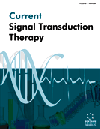
Full text loading...
We use cookies to track usage and preferences.I Understand
Pattern Recognition Receptors (PRRs), particularly Toll-like Receptors (TLRs), are pivotal in the innate immune system for recognizing Pathogen-associated Molecular Patterns (PAMPs) and initiating inflammatory responses. TLRs, characterized by their transmembrane structure, Leucine-rich Repeat (LRR) ectodomain, and Toll/Interleukin-1 Receptor (TIR) domains, detect a diverse range of microbial and endogenous ligands through MyD88- and TRIF-dependent pathways. This engagement activates downstream signaling cascades involving key mediators such as Nuclear Factor Kappa B (NF-κB), Mitogen-activated Protein (MAP) kinases, and Interferon Regulatory Factors (IRFs), which orchestrate pro-inflammatory cytokine production and immune responses. TLRs are not only implicated in various pathologies like multiple sclerosis, rheumatoid arthritis, and atherosclerosis but also show potential in diagnosing and preventing infectious diseases like dengue fever and periodontal disease. Recent advancements reveal their dual role as both agonists and antagonists in enhancing vaccine responses and developing novel cancer immunotherapies. This review provides a comprehensive synthesis of recent research and patents on TLRs, emphasizing novel therapeutic strategies and targeted delivery systems for biomedical applications. The future scope of TLR research is explored, with a focus on how TLR-targeted therapies could transform the management of inflammatory and immune-mediated disorders.

Article metrics loading...

Full text loading...
References


Data & Media loading...

